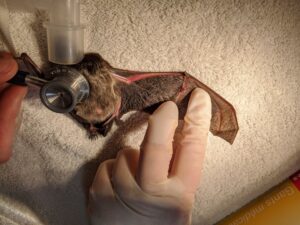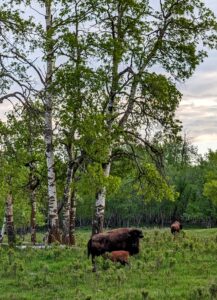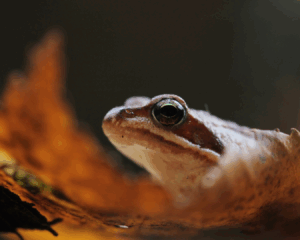Spring has finally arrived, and with spring comes migratory song birds and a new generation of wildlife. Spring is one of the busiest times for AIWC. We see an increase in patient numbers as the breeding season begins due to things such as human-wildlife conflict, incidents with domesticated house pets, and other man-made hazards.
There are a number of things you can do to make your yard more wildlife friendly. This blog outlines different hazards and how to make them less dangerous to the wildlife visiting your yard.
One of the top hazards for songbirds are windows, killing about one billion birds annually (EALT 2017, Cornell University 2016). Windows often appear as a reflection of the sky or surrounding trees, and when there isn’t a reflection birds may see right through the window and collide into it as a result (EALT 2017). There are a few things that you can do to help prevent window strikes:
- Place bird baths and bird feeders within 1 m or further than 10 m from a window (EALT 2017, Cornell University 2009). Window strikes are more likely to be fatal if the bird is flying at top speed.
- Use stickers designed to help birds see the window. Some window decals reflect UV light, which is visible to birds but not people (EALT 2017). There are also stickers designed to allow people to see out from the inside, but prevent reflections on the outside (Cornell University 2009).
- See this website for more information on window strikes https://www.flap.org/residential_new.php
Another hazard for songbirds are cats. Cats are continually one of the leading causes for songbird deaths annually and more than 100 million deaths caused by cats are estimated in Canada each year (EALT 2017).
- The simplest fix for this is to keep your cat inside, where they will also be the safest.
- If your feline friend goes stir crazy, compromise by creating an outdoor cat-condo, putting them on a harness, or supervising their outdoor time.
Some pesticides are toxic and can harm wildlife (Whitford et al. date unknown). It can pose a hazard to some species through biomagnification (the increase of a toxin occurring in an organism’s tissue higher up in the food chain) and there are several ways to garden that can either reduce or eliminate the use of pesticides. The Canadian Wildlife Federation has 5 tips on their website (https://cwf-fcf.org/en/resources/DIY/at-home/five-alternatives-to-pesticides.html) to help be more eco-friendly in your yard:
Use coffee grounds as a natural fertilizer.
- Use vinegar to stave away slugs.
- Use boiling water to get rid of pesky weeds
- Aerate!
- Plant a variety of different species in your garden to attract different pollinators.
Window wells can pose as a trap for small, non-aerial wildlife and they can succumb to starvation if they can’t get out of the window well (EALT 2017).
- Installing a window well cover over the window can decrease the chances of an animal falling in the well.
Water barrels are a great natural and resource-friendly way to collect rain water to use on your yard and in your garden, but if they aren’t set up properly they can become a trap for some animals (EALT 2017).
- By covering your water barrel with a screen, you will protect against small animals from becoming trapped and drowning.
- By using the rain water in your rain barrel more frequently, you reduce the risk of wildlife drowning and you also reduce the likelihood that mosquitos will use the water as their nesting ground.
As always, AIWC is ready to help with any orphaned and injured wildlife you come across. By making your yard wildlife friendly, you become a steward for wildlife and reduce the chance of human-wildlife conflict!
By Tayler Hamilton, AIWC Volunteer
References:
Cornell University. 2016. If You Have a Wildlife Friendly Yard, Watch Out For Window Collisions. Available at: https://www.allaboutbirds.org/wildlife-friendly-yards-welcome-birds-but-can-increase-window-collisions/
Cornell University. 2009. Why Birds Hit Windows – And How You Can Help Prevent It. Available at: https://www.allaboutbirds.org/why-birds-hit-windows-and-how-you-can-help-prevent-it/
EALT (Edmonton & Area Land Trust). 2017. Hazardous Habitats. Available at: https://www.ealt.ca/hazardous-habitats
CWF (Canadian Wildlife Federation). 2008. Five Alternatives to Pesticides. Available at: https://cwf-fcf.org/en/resources/DIY/at-home/five-alternatives-to-pesticides.html
Whitford, F., Miller, B., Bennet, R., Jones, M., and L. Bledsoe. Date Unknown. Pesticides and Wildlife: An Introduction to Testing, Registration, and Risk Management. Edited by Blessing, A., and D. Doyle. Purdue Pesticide Programs, Purdue University Cooperative Extension Service.






